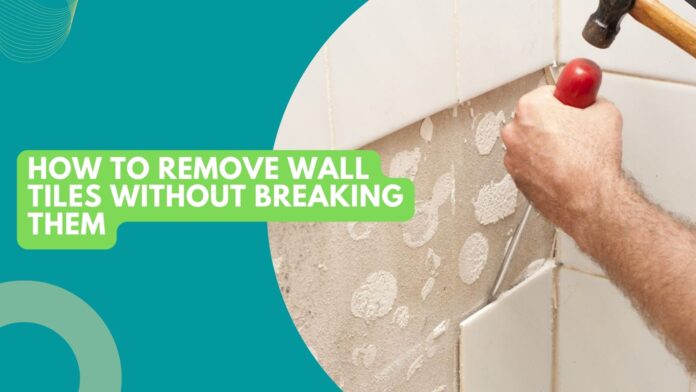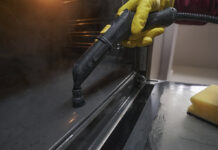Getting involved with a DIY renovation is a great way to save money and make your mark on a home. If you want to go a step further, it’s often possible to remove wall tiles without breaking them. The tiles you save can then be reused in your new design! Removing tiles without cracking them can be a bit of a challenge, so we’re going to cover the basics in this article.
The Tools You’ll Need
Wall tiles can be removed using simple hand tools. To get the job done, you’ll need:
- Ear, eye and breathing protection
- Enclosed shoes
- Leather work gloves
- Masonry chisel
- Utility knife
- Screwdrivers
- Heat gun (optional)
- Painter’s drop cloths
- Pliers
Removing tiles without breaking them can sometimes be a challenge. Using hand tools makes it less likely that you’ll break tiles as you remove them. If you’d like to speed up the process, you can use a grinder or dremel with a grinding disc attachment to remove grout.
Prepare Your Worksite
Removing tiles is a messy business. Before you get started, you need to prepare the worksite. The best way to protect your worksite is to use canvas drop cloths. These are tough enough to withstand being walked on, and they make cleaning up easy. Be extra careful to protect taps and any ceramic fittings like toilets, sinks, baths, and shower pans. Ceramic is very brittle and may crack if you drop a tile or a tool on it.
Tile Removal Procedure
Removing tile is usually very simple and doesn’t take much practice. There are only 4 steps involved:
- Remove the grout – Use your utility knife or screwdriver to scrape the grout around the tile you want to remove. Make several passes along the grout line, digging the tool in so that it scrapes the material out. Hardened grout should scrape away easily with a metal tool. If you’re struggling, use a heat gun to warm up the grout in sections as you scrape.
If you’re retiling an entire wall, then there’s no need to remove all the grout. Simply remove the grout where the wall meets the floor, ceiling, or a corner, then begin removing tiles from the edge. Note that the more grout you remove, the less likely you are to break a tile in the process.
- Tap the tile loose – Once you’ve scraped away all the grout around the tile, you can test it to see if there’s a loose spot. Use the handle of your chisel to lightly tap on each corner of the tile. Look for any movement that indicates a loose spot. If you see the tile move, that’s where you’ll have the most luck removing it from the wall.
To remove a tile, you simply need to angle your chisel to point between the wall and the tile. Tap it with a hammer, and the tile should pop off. Be mindful that tiles tend to fall off as they come away from the wall. Be ready to catch it if you’re hoping to reuse the tiles!
- How to break a tile – Tiles usually come away from the wall fairly easily. If you’re struggling, it can help to try and start somewhere else, or you might have to break a tile to get started.
Make sure you’re wearing eye protection before you try to break any tiles. Then, get your chisel and hammer and use them to make a hole in the middle of the tile. From there, use the chisel to chip away until the rest of the tile is gone. You should be able to remove other tiles without breaking them once the first one is off.
- Clean up the adhesive – Your wall and the backs of the tiles will be covered in hardened tile adhesive. This can be chipped away with your chisel and a bit of patience. Any tile spacers you find can be snipped off using your pliers. If you’re planning on reusing the tile then you’ll also need to remove leftover adhesive from them too.
A Word About Safety
Most types of wall tiles are made from masonry products like ceramic, porcelain, stone, or concrete. This means that broken tiles are incredibly sharp, and any dust you produce could be harmful to your health. When doing any tiling work, it’s vital that you wear appropriate ear, eye, and breathing protection. A dust mask will be sufficient in most cases, and clear protective glasses will keep your eyes safe. For your hands, thick leather gloves are recommended, as broken ceramic is as sharp as glass and can easily cut your skin.


















